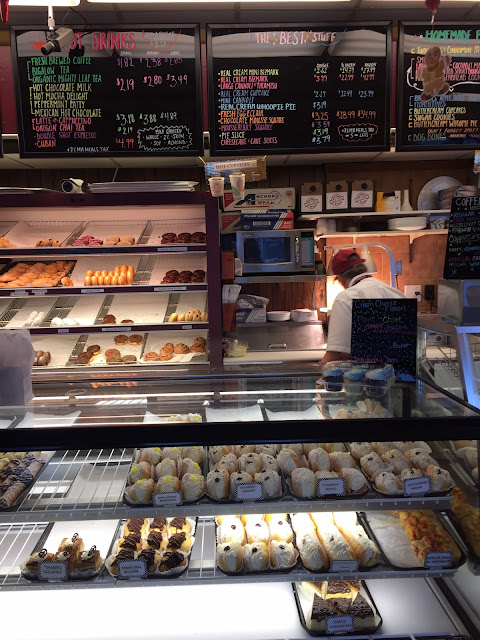Mark Twain was so besotted with Heidelberg, Germany when he lived there for several months in 1878 that he devoted a chapter in his work, A Tramp Abroad, describing why it is the most ideal city and though I only spent a fifth of my trip there, I would 100% agree with Twain!
Heidelberg is a city situated on the River Neckar in southwest Germany.It is the longest city in the country and a popular destination because of its romantic and picturesque landscape.
On our second day in Heidelberg, my university and I were provided a walking tour of the city by a woman named Sonja, who also went by Mary Poppins because she habitually wears a boater hat and gloves as well as carries a parasol. The first stop was at the Jesuitenkirche, a Catholic church that was built from 1712 to 1751 for the Jesuits who arrived in 1698.
Both the interior and exterior are quite a sight, but my favorite part was going outside to the silent area, a lush outdoor garden where visitors can go to quietly reflect and meditate. It was the only moment that day I really had to myself and as an introvert I treasured it.
From there, Sonja took us on a funicular up to Heidelberg Castle. It is this Gothic masterpiece that makes Heidelberg a place out a fairy tale. It was built and repeatedly extended between the 13th and 17th centuries and was extinguished by the Thirty Years’ War and the 1689 war with France. Despite it now being in ruins, it is viewed as one of Germany’s most beautiful gems.




One of the things I was most excited to see in Germany was Heidelberg Castle and it definitely exceeded my expectations. I was the secretary of my drama club in high school, so it was awesome discovering the Castle has a stage where it regularly puts on productions. My only wish during the trip was that we arrived a few days earlier so I could have seen their recent production of Romeo & Juliet. Another part of the Castle I enjoyed was the Heidelberg Tun, the world’s largest wine barrel. Back when it was constructed in 1751, it held 221, 726 liters. Today, due to the drying of the wood, it can only hold 219,000 liters.

After Sonja's tour, I toured the University of Heidelberg’s student prison. Founded in 1386, this university is the oldest university in Germany and is basically the nation’s Harvard. From 1778 to 1914, the University of Heideilberg could imprison their students from 24 hours to 4 weeks for any rule breaking. The students were still allowed to attend lectures, so the prison was more like a restrictive dormitory, and those in residence would occupy their time grafting the walls to immortalize their stay. It was not uncommon for a student to create mischief just to be sent there so they could be with their friends. I thought touring the University Prison was a unique experience because prior to it I had never heard of a university prisoning its students. Overall, I was impressed with the way the University had preserved the prison. With the pristine graffiti and the smell of urine lingering in the air, you would have had no idea that the prison has been out of service for a hundred years.



Following a midday lunch break of sausages and beer, I climbed to the top of Heiliggeistkirche, the most famous church in Heidelberg. It stands in the middle of the market place in the old center of Heidelberg and is the city’s oldest sanctuary. It’s steeple dominates the city, and climbing all 208 steps to the top was terrifying. There is only one staircase that takes you up and down and it just so happens to be a narrow spiral one. I found myself clinging to the wall to ensure I wouldn't fall to my death, but once at the top, as just like everything I had been seeing in Germany, it was to die for!

From the Heiliggeistkirche, I did some more intense climbing at Philosopher’s Walk. Built in 1817 on the slopes of Heiligenberg and at an altitude of 650 feet, the Philosopher’s Walk offers a magnificent view of the city. My professor told us the reason for its’ name is you’re suppose to have either philosophical thoughts or discussions during the climb and when I ascended with him and two other student we did indeed have some stimulating talks about death and identity.
Now that is a vista you could talk about for a long time if you can find words to describe it!
My stay in Heidelberg went out with bang.There are three times every summer when the well-known Schlossbeleuchtung and fireworks display happens and they are the first Saturday in June and September and the second Saturday in July, which was when I was there.
The castle lighting is done in memory of the three times when the castle went up in flames (1689, 1693, and 1764). The first two times were due to wars with the French, and the last time by lightning. After the flames in the Castle gradually faded, it was time for part two- the fireworks launched off of the Old Bridge.These fireworks symbolized when the Elector-Palatine, Friedrich V, first brought his newlywed bride, Elizabeth Stuart (daughter of James I of England), back to Heidelberg in 1613 and he arranged for her to be greeted with a fireworks display. It was the best fireworks display I'd ever seen, even surpassing the ones in Disney!
Stay tuned for my next post on Munich!




























































